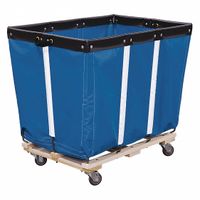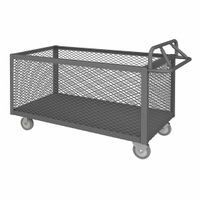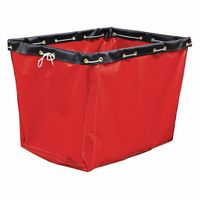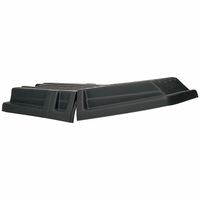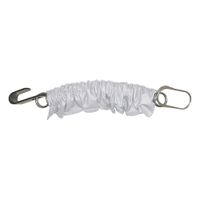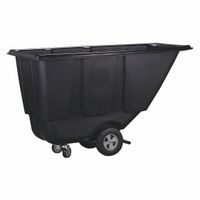Call +(254) 703 030 000 / 751 483 999 / 721 704 777
- Home
- Material Handling
- Transporting
- Carts Trucks
- Bulk Container Trucks Tilt Trucks
.....Read More
Frequently Asked Questions
What are the differences between bulk container trucks and tilt trucks?
Bulk container trucks are designed to transport large quantities of goods, often in standardized containers. They are typically used for long-haul transportation and are equipped to handle heavy loads. These trucks are ideal for shipping goods that need to be protected from the elements, as the containers are usually sealed and weatherproof. Bulk container trucks are versatile and can carry a wide range of products, from raw materials to finished goods.
Tilt trucks, on the other hand, are designed for easy loading and unloading of materials. They have a tilting mechanism that allows the bed of the truck to be angled, making it easier to dump or slide out the contents. Tilt trucks are often used for transporting loose materials like gravel, sand, or waste. They are commonly used in construction, landscaping, and waste management industries. The tilting feature makes them highly efficient for jobs that require frequent loading and unloading.
In summary, the primary difference lies in their design and purpose: bulk container trucks are optimized for transporting large, sealed containers over long distances, while tilt trucks are designed for easy loading and unloading of loose materials.
How do tilt trucks improve unloading efficiency?
Tilt trucks improve unloading efficiency through several key features:
1. **Ergonomic Design**: Tilt trucks are designed to minimize physical strain on workers. Their ergonomic handles and balanced weight distribution make them easy to maneuver, reducing the effort required to transport heavy loads.
2. **Increased Mobility**: Equipped with durable wheels, tilt trucks can be easily moved across various surfaces, including rough or uneven terrain. This mobility allows for quicker transportation of materials from one location to another.
3. **Easy Tilting Mechanism**: The tilting feature allows for effortless unloading. By simply tilting the truck, contents can be dumped directly into larger containers or onto the ground, minimizing the need for manual lifting and reducing unloading time.
4. **Large Capacity**: Tilt trucks often have a large volume capacity, enabling the transport of significant amounts of material in a single trip. This reduces the number of trips needed, thereby increasing overall efficiency.
5. **Versatility**: They can handle a wide range of materials, from waste and recyclables to raw materials and finished goods. This versatility means they can be used in various industries, streamlining processes across different sectors.
6. **Durability**: Made from robust materials like polyethylene or steel, tilt trucks are built to withstand heavy use and harsh conditions. Their durability ensures long-term reliability, reducing downtime for repairs or replacements.
7. **Safety Features**: Many tilt trucks come with safety features such as locking mechanisms to prevent accidental tilting and secure lids to contain contents during transport. These features help prevent spills and accidents, maintaining a safe working environment.
Overall, tilt trucks enhance unloading efficiency by combining ease of use, capacity, and safety, leading to faster and more effective material handling.
What are the advantages of using hopper trucks for bulk material transport?
Hopper trucks offer several advantages for bulk material transport:
1. **Efficiency**: Hopper trucks are designed for quick loading and unloading, reducing downtime and increasing the efficiency of transport operations. The gravity-fed discharge system allows for rapid unloading without the need for additional equipment.
2. **Versatility**: These trucks can transport a wide range of bulk materials, including grains, sand, gravel, and other aggregates. This versatility makes them suitable for various industries such as agriculture, construction, and mining.
3. **Cost-Effectiveness**: By enabling faster loading and unloading, hopper trucks reduce labor costs and minimize the time trucks spend idle. This efficiency translates into lower operational costs and improved profitability.
4. **Reduced Contamination**: The enclosed design of hopper trucks helps protect materials from environmental factors such as rain, dust, and debris, reducing the risk of contamination and maintaining the quality of the transported goods.
5. **Safety**: The design of hopper trucks minimizes the need for manual handling of materials, reducing the risk of workplace injuries. The automated unloading process also enhances safety by limiting human intervention.
6. **Environmental Benefits**: By optimizing load capacity and reducing the number of trips required, hopper trucks contribute to lower fuel consumption and reduced emissions, supporting environmental sustainability.
7. **Durability**: Built to withstand heavy loads and harsh conditions, hopper trucks are durable and require less frequent maintenance, leading to lower long-term maintenance costs.
8. **Scalability**: Hopper trucks can be easily integrated into larger logistics and supply chain operations, allowing businesses to scale their transport capabilities according to demand.
Overall, hopper trucks provide a reliable, efficient, and cost-effective solution for bulk material transport, making them a preferred choice in various industries.
How do cube trucks and box trucks differ in design and usage?
Cube trucks and box trucks are often used interchangeably, but they have distinct differences in design and usage.
Design:
1. **Cube Trucks**:
- Typically have a more uniform, box-like shape with a seamless transition between the cab and the cargo area.
- The cargo area is often integrated into the vehicle's frame, giving it a more compact appearance.
- Usually smaller in size, making them ideal for urban environments and tight spaces.
2. **Box Trucks**:
- Feature a separate cargo box mounted onto a chassis, which can be removed or replaced.
- The cargo area is often larger and more rectangular, providing more storage space.
- The cab and cargo area are distinct, with a visible separation between them.
Usage:
1. **Cube Trucks**:
- Commonly used for local deliveries, such as parcel delivery services, due to their maneuverability.
- Ideal for transporting smaller loads or goods that require frequent loading and unloading.
- Often used by businesses that need to navigate narrow city streets.
2. **Box Trucks**:
- Used for larger deliveries, such as moving furniture or transporting goods over longer distances.
- Suitable for businesses that require more cargo space and the ability to carry heavier loads.
- Often used in industries like moving services, retail, and logistics.
In summary, cube trucks are more compact and suited for urban deliveries, while box trucks offer more cargo space and are used for larger, heavier loads.
What materials are typically used for the walls of basket trucks?
Basket trucks, often used in industrial, commercial, and institutional settings for transporting goods, are typically constructed using a variety of materials for their walls to ensure durability, flexibility, and ease of maintenance. Common materials include:
1. **Vinyl-Coated Nylon or Polyester**: These fabrics are popular for their lightweight nature, flexibility, and resistance to tearing and abrasion. The vinyl coating provides water resistance, making them suitable for transporting wet or damp items.
2. **Polyethylene**: This is a type of plastic known for its durability and resistance to chemicals and moisture. Polyethylene walls are often used in basket trucks that need to carry heavy or sharp objects, as they provide a rigid structure.
3. **Canvas**: A traditional material, canvas is valued for its strength and breathability. It is often used in applications where airflow is necessary, such as in laundry or textile transport.
4. **Mesh**: Made from materials like nylon or polyester, mesh walls allow for visibility and ventilation, which is ideal for transporting items that need to dry or be seen easily.
5. **Steel or Wire**: Some basket trucks feature steel or wire mesh walls for added strength and security. These are typically used in environments where the contents need to be protected from theft or damage.
6. **Polypropylene**: Similar to polyethylene, polypropylene is a durable plastic that offers resistance to impact and chemicals. It is often used in heavy-duty basket trucks.
These materials are chosen based on the specific needs of the application, such as the weight of the items being transported, the need for water resistance, and the requirement for visibility or ventilation.
What factors should be considered when choosing between different types of bulk container trucks?
1. **Cargo Type**: Consider the nature of the goods being transported. Different bulk container trucks are designed for specific types of cargo, such as liquids, dry goods, or refrigerated items.
2. **Capacity Requirements**: Evaluate the volume and weight of the cargo. Ensure the truck can handle the load without exceeding legal weight limits.
3. **Distance and Route**: Consider the distance and type of terrain. Some trucks are better suited for long hauls, while others are designed for short, urban routes.
4. **Regulatory Compliance**: Ensure the truck meets all legal and safety regulations, including weight limits, emissions standards, and specific requirements for hazardous materials.
5. **Cost Efficiency**: Analyze the cost of purchase, maintenance, and operation. Consider fuel efficiency and potential return on investment.
6. **Loading and Unloading**: Evaluate the ease and speed of loading and unloading. Some trucks have specialized equipment to facilitate these processes.
7. **Durability and Reliability**: Consider the build quality and reputation of the manufacturer. A reliable truck reduces downtime and maintenance costs.
8. **Flexibility and Versatility**: Determine if the truck can be used for multiple types of cargo or if it is specialized for a single type.
9. **Technology and Features**: Look for advanced features such as GPS tracking, telematics, and automated systems that enhance efficiency and safety.
10. **Environmental Impact**: Consider the environmental footprint, including emissions and fuel consumption. Opt for eco-friendly options if possible.
11. **Driver Comfort and Safety**: Ensure the truck provides a comfortable and safe environment for drivers, which can improve productivity and reduce turnover.
12. **Resale Value**: Consider the potential resale value of the truck, which can impact long-term financial planning.
How do the capacities of these trucks compare for different types of materials?
The capacities of trucks for different types of materials vary based on the truck type and the material's characteristics.
1. **Dump Trucks**: Typically used for loose materials like sand, gravel, or demolition waste. Their capacity is measured in cubic yards, ranging from 10 to 16 cubic yards for standard models. Heavier materials like gravel may reduce the volume capacity due to weight limits.
2. **Flatbed Trucks**: Ideal for large, heavy, or irregularly shaped items such as machinery or construction materials. Capacity is measured in weight (tons) rather than volume, with typical limits between 15 to 25 tons, depending on the truck size and axle configuration.
3. **Box Trucks**: Used for transporting goods that need protection from the elements, such as furniture or packaged goods. Capacity is measured in cubic feet, with common sizes ranging from 1,000 to 3,000 cubic feet. Weight limits also apply, typically around 7 to 10 tons.
4. **Tanker Trucks**: Designed for liquids or gases, with capacity measured in gallons or liters. Small tankers hold around 3,000 gallons, while larger ones can carry up to 11,600 gallons. The density of the liquid affects the weight capacity.
5. **Refrigerated Trucks**: Used for perishable goods, with capacity measured in cubic feet. Sizes range from 1,000 to 2,500 cubic feet, with weight limits similar to box trucks. Temperature control is a key feature.
6. **Logging Trucks**: Specifically for transporting logs, with capacity measured in weight (tons) and length. They can carry up to 40 tons, depending on the truck and log size.
Each truck type is optimized for specific materials, balancing volume and weight capacities to comply with legal and safety standards.
